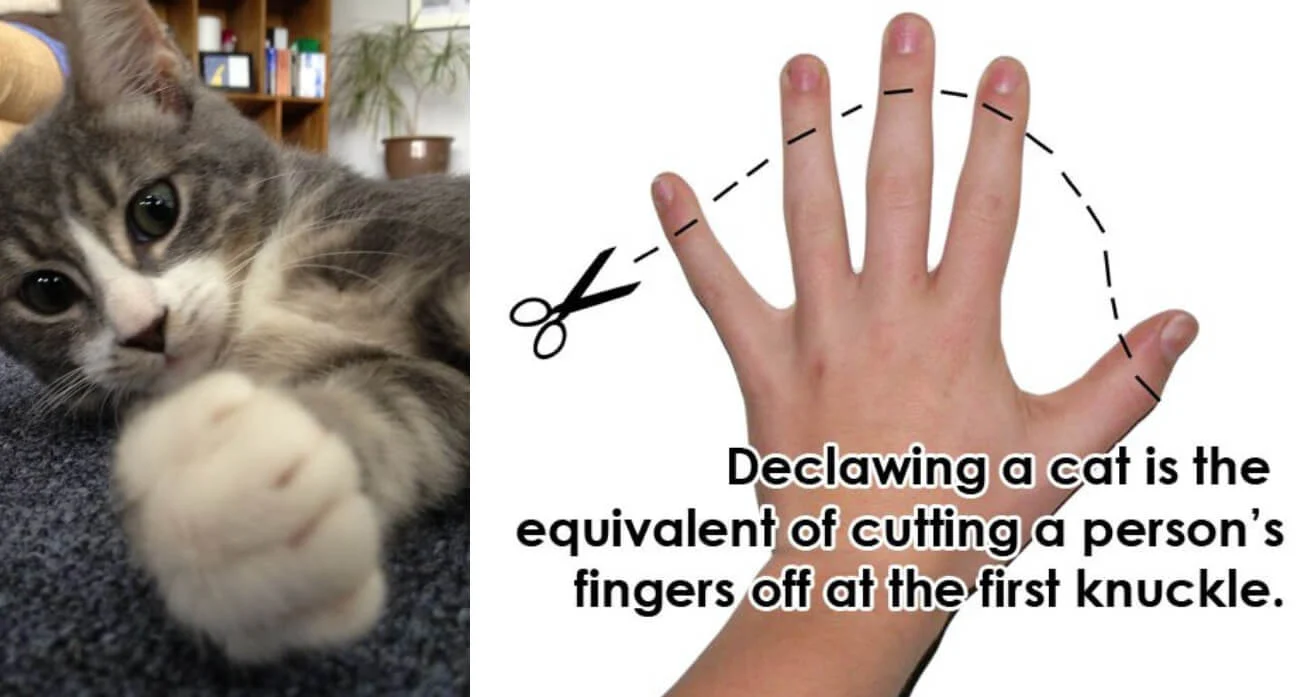“Cat declawing” is a surgical procedure performed on cats to remove their claws. It’s a controversial practice primarily done to prevent cats from scratching furniture, people, or other pets. Declawing involves amputating the last bone of each toe, including the claw. This procedure is highly debated because it’s considered inhumane by many animal welfare organizations and veterinarians.
Declawing can lead to various physical and behavioral issues for cats, including chronic pain, difficulty walking, aggression, and an increased tendency to bite. Many countries and jurisdictions have either banned or heavily restricted the practice due to these concerns. Instead of declawing, experts recommend providing cats with appropriate scratching surfaces, regular nail trimming, and behavior training to manage scratching behavior.

Dr. Pol advocating “Cat Declawing”
July 2020: An investigation reveals that Dr. Pol and his four other veterinarians at Pol Veterinary Services are still performing cat declawing procedures. Despite mounting criticism and advocacy efforts, the practice persists, with a spay/4-paw declaw costing around $300. When questioned about the long-term effects on cats, an employee asserts they have never encountered problems, promoting the use of a laser for the procedure.
August 2019: Employees confirm that all five veterinarians at Dr. Pol’s practice perform declaws, with a spay/declaw priced at $210. The use of a laser is highlighted as the preferred method, with efficiency cited as a reason why other vets usually handle the procedure.
November 2019: Activists intensify their efforts to halt the declawing practice at Dr. Pol’s Veterinary Services. A mobile billboard campaign targets the facility, urging Dr. Pol and his team to reconsider the inhumane practice. Petitions directed at Nat Geo Wild and Disney+ aim to leverage public pressure against the continued declawing of cats.
December 14, 2023: Despite advocacy campaigns and public pressure, a researcher’s inquiry confirms that Dr. Pol and his team persist in declawing cats. An employee at the veterinary service reveals that the practice remains routine, with no indication of cessation. The revelation sparks renewed calls for action and the circulation of petitions urging Dr. Pol and his affiliated networks to cease declawing procedures.
The persistence of cat declawing at Dr. Pol’s Veterinary Services underscores the ongoing debate surrounding the ethics and consequences of the practice. Activists continue to mobilize, utilizing legal avenues and public awareness campaigns to advocate for the welfare of cats and the cessation of declawing procedures.





